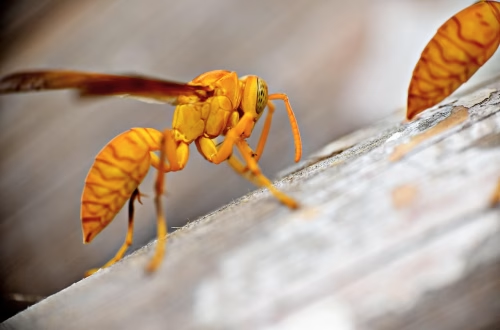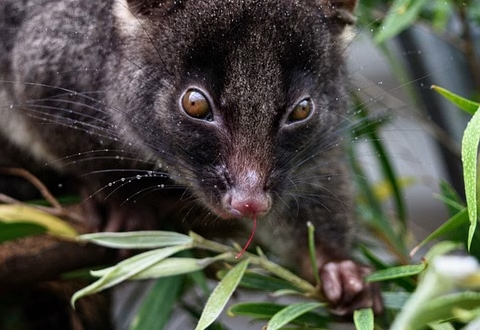Summary:
Pest control for bakeries is a critical aspect of maintaining food safety, hygiene, and compliance with health regulations. Bakeries are particularly vulnerable to pests like rodents, insects, and birds due to the abundance of food supplies. Effective pest management strategies include preventive measures, regular inspections, and professional pest control services. Failure to address pest issues can lead to health violations, financial losses, and damage to the bakery’s reputation. This article explores the types of pests, control methods, risks, and how to choose the right pest control service.
What This Means for You:
- Regular pest inspections can prevent infestations before they escalate.
- Implementing preventive measures like sealing entry points and proper waste management reduces pest attraction.
- Hiring a specialized pest control service ensures compliance with food safety regulations.
- Ignoring pest issues can lead to costly fines, shutdowns, and loss of customer trust.
Pest Control For Bakeries Explained:
Pest Control For Bakeries refers to the strategies and practices used to prevent and manage pest infestations in bakery environments. Bakeries, with their constant supply of flour, sugar, and other food ingredients, are prime targets for pests like rodents, cockroaches, and stored product insects. Effective pest control ensures compliance with health and safety standards, protects food quality, and safeguards the bakery’s reputation.
Pest control in bakeries involves a combination of preventive measures, regular monitoring, and professional interventions. These practices are essential not only for preventing infestations but also for maintaining a clean and safe environment for food preparation. Compliance with both state and federal regulations is mandatory, as failure to do so can result in severe penalties.
Types of Pest Issues:
Bakeries face a variety of pest issues, each posing unique challenges. Common pests include rodents like rats and mice, which can contaminate food and spread diseases. Insects such as cockroaches, flour beetles, and moths are also prevalent, as they are attracted to flour, sugar, and other ingredients. Birds, while not as common, can still pose a threat by contaminating products and creating unsanitary conditions.
State and federal regulations, such as those outlined by the Food and Drug Administration (FDA) and local health departments, require bakeries to maintain pest-free environments. These regulations mandate regular inspections and prompt action to address any pest issues. Failure to comply can result in fines, shutdowns, and even legal action.
Understanding the specific pests that target bakeries is crucial for implementing effective control measures. For example, while rodents require traps and sealing entry points, insects may need targeted treatments like fumigation or insecticide applications. Tailoring pest control strategies to the specific pests in a bakery ensures comprehensive protection.
Common Pest Control Methods:
Effective pest control in bakeries involves a combination of preventive and reactive measures. Preventive strategies include sealing entry points, maintaining cleanliness, and proper storage of ingredients. Regular inspections help identify potential issues before they escalate, ensuring timely intervention.
Professional pest control services play a vital role in managing infestations. These services use advanced techniques like baiting, trapping, and environmentally friendly pesticides to eliminate pests. Integrated Pest Management (IPM) is a popular approach that combines multiple strategies for long-term pest control while minimizing risks to humans and the environment.
One successful example is the use of pheromone traps for stored product insects, which attract and capture pests without the use of chemicals. Similarly, ultrasonic devices can deter rodents by emitting high-frequency sounds. Combining these methods with regular monitoring ensures a proactive approach to pest control.
Risks and Consequences:
The risks of ignoring pest issues in bakeries are significant. Pests can contaminate food products, leading to health hazards for consumers. Contaminated products can also result in costly recalls and damage to the bakery’s reputation. Health inspections can lead to violations, fines, or even closure if pest issues are not addressed promptly.
Beyond financial losses, pest infestations can disrupt bakery operations, leading to downtime and lost revenue. Additionally, repeated pest problems can erode customer trust, making it difficult to rebuild the bakery’s reputation. Long-term infestations can also cause structural damage to the building, requiring expensive repairs.
Proactive pest control not only mitigates these risks but also ensures compliance with health regulations, protecting the bakery’s bottom line and reputation. Ignoring pest issues is simply not an option for businesses that prioritize food safety and customer satisfaction.
Choosing a Pest Control Service:
Selecting the right pest control service is crucial for effective pest management in bakeries. Look for providers with experience in the food industry and a proven track record in handling bakery-specific pest issues. Specialized services understand the unique challenges bakeries face and can tailor solutions accordingly.
Key factors to consider include the provider’s licensing, certifications, and use of environmentally friendly methods. For example, Integrated Pest Management (IPM) is a preferred approach as it minimizes chemical use while effectively controlling pests. Additionally, ensure the service offers regular monitoring and follow-up visits to maintain long-term pest-free conditions.
Communication is also essential. A reliable pest control provider should clearly explain their methods, provide detailed reports, and offer actionable advice for preventing future infestations. Investing in a professional service not only ensures compliance but also provides peace of mind, knowing your bakery is protected.
People Also Ask About:
- What are the most common pests in bakeries?
The most common pests in bakeries include rodents (rats and mice), insects (cockroaches, flour beetles, and moths), and occasionally birds. - How often should a bakery be inspected for pests?
Bakeries should be inspected at least monthly, with more frequent checks in high-risk areas or during peak pest seasons. - Are chemical pesticides safe for bakeries?
When used correctly by professionals, chemical pesticides can be safe. However, non-chemical methods like traps or IPM are often preferred to minimize risks. - Can pests lead to legal issues for bakeries?
Yes, pest infestations can result in health violations, fines, or even shutdowns if not addressed promptly. - What are the signs of a pest infestation in a bakery?
Signs include droppings, gnaw marks, nests, unusual odors, and sightings of live or dead pests.
Expert Opinion:
Maintaining a pest-free bakery is essential for food safety and compliance. Proactive measures, regular inspections, and professional pest control services are key to preventing infestations. Ignoring pest issues can lead to severe consequences, including health risks, financial losses, and damage to your bakery’s reputation. Always prioritize pest control to ensure a safe and successful business.
Related Key Terms:
- Pest control for bakeries near me
- Food-safe pest control methods
- Integrated Pest Management for bakeries
- Rodent control in bakeries
- Insect control for food businesses
- FDA pest control regulations for bakeries
- Professional pest exterminators for bakeries
Pest Control Disclaimer
This content is for educational purposes only and does not replace professional pest inspection, treatment, or safety advice. Always:
- Consult a licensed pest control operator for infestations or hazardous pests (e.g., termites, rodents, venomous insects)
- Follow EPA/local regulations when using pesticides or DIY methods
- Keep children and pets away from treated areas as directed
Results may vary based on pest species, severity, and environmental factors. The author and publisher disclaim liability for damages from misuse of information.
*Featured image sourced by Pixabay.com





